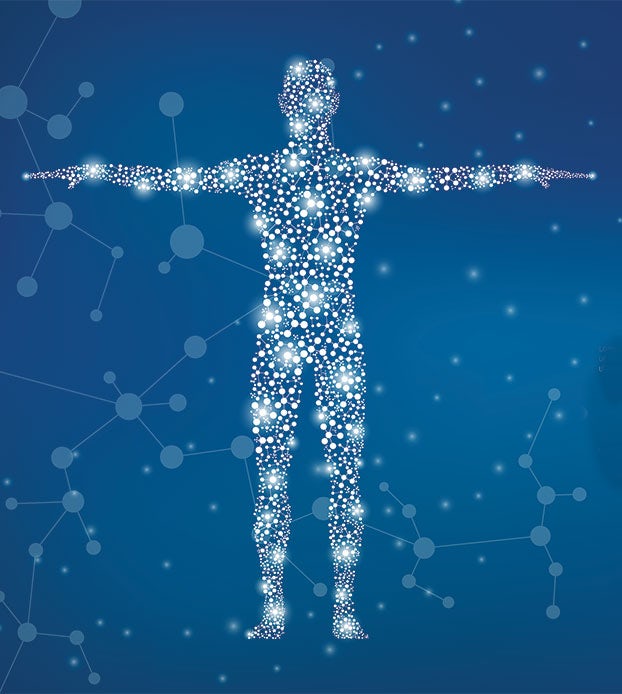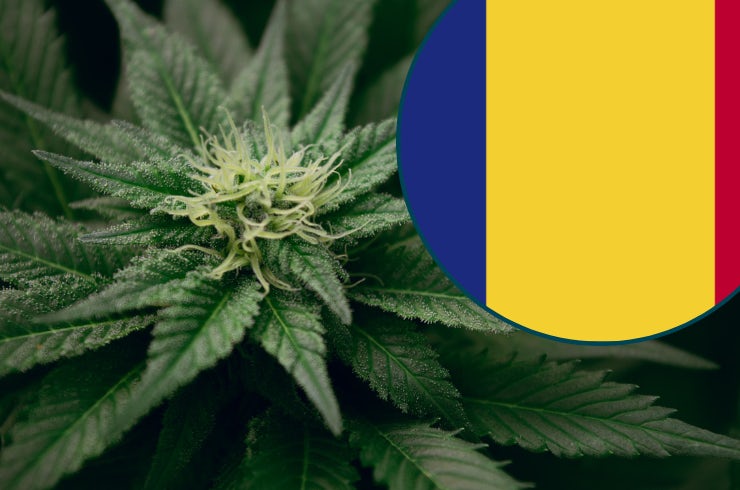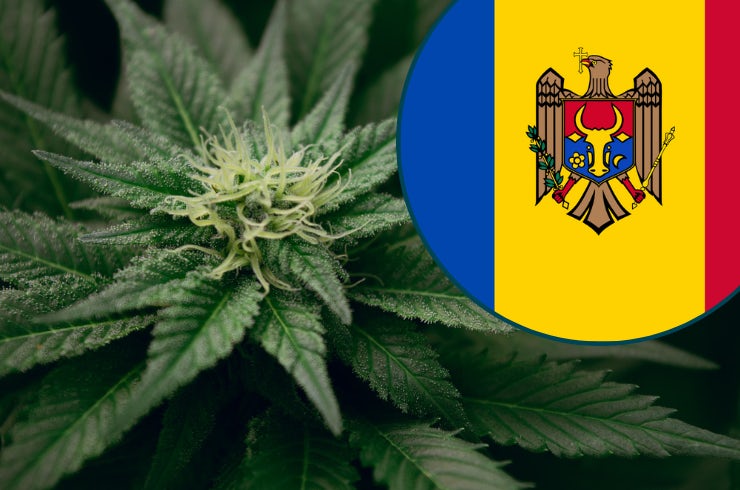Discovered by scientists in the early 1990s, the endocannabinoid system is responsible for regulating many basic functions throughout the body including mood, appetite and memory.
The system can be activated by cannabinoids that are naturally created by the body — endocannabinoids — and those found in the cannabis plant — phytocannabinoids — which, as you might have guessed, is where it got its name (endo means “internal” and phyto means “plant”).
➤ Get your medical card now with The Cannigma Medical
Cannabinoid receptors were discovered because researchers were trying to understand how phytocannabinoids like THC interact with the body. They were named cannabinoid receptors after the main chemicals that activate them — cannabinoids.
Scientists later discovered that the body produces very similar molecules that fit the same receptors. They were named endocannabinoids.
Among the functions regulated by the endocannabinoid system (ECS) are memory, appetite, body temperature, the immune system, sleep, pain, and the female reproductive system.
By regulating these functions, the ECS is believed to help maintain balance, or homeostasis, in the body. In fact, the ECS has even been called a master regulator of homeostasis.
How does the endocannabinoid system work?
In order to understand what the ECS is, it’s helpful to imagine the process of how it works.
Take pain, for example.
Let’s imagine a woman named Emma is jogging with her dog in the park. She trips on a rock and twists her ankle. Emma immediately feels pain, which is a reaction to the impact of hitting the ground.
Once the fall is over, however, the immediate pain no longer necessary, so the central nervous system (CNS) recruits enzymes to slow down and stop the pain signals.
These enzymes then create special molecules called endocannabinoids, primarily anandamide and 2-AG, to get the job done.
The primary endocannabinoids: Anandamide and 2-AG (2-Arachidonoylglycerol)
Anandamide
Commonly referred to as the “bliss molecule,” anandamide plays a key role in the regulation of mood, reward response, and emotion.
Low anandamide levels are linked to depression, anxiety, and schizophrenia. Interestingly, many of the prescription medications used to treat pain and depression may be associated with increased levels of anandamide.1
2-AG (2-Arachidonoylglycerol)
Research shows that one of the main functions of 2-AG is reducing inflammation while regulating other essential functions of the immune system.
Like anandamide, 2-AG is involved in the regulation of mood, emotion, and pain perception, while also playing a role in memory, reproductive health, and sleep cycle regulation.2 3
These endocannabinoids are known as lipid signals, which activate specific cellular receptors — kind of like a key that only opens a certain type of lock.
These “locks” are actually receptors that sit on the cells throughout the body.
In the case of a sprained ankle, like our friend Emma above, enzymes create endocannabinoids to promote appropriate inflammation at the site of injury — and she starts to experience pain relief. This process actually happens in seconds, with the body producing endocannabinoids on demand, using them, and then rapidly breaking them down.
Cannabinoid receptors: Why cannabis can help so many conditions
While we don’t yet know exactly how cannabis works, we do know that it can interact with the ECS, which is present all over the body.
We know that the ECS is very active in the brain, and specifically in areas that involve conditions such as Parkinon’s disease, Alzheimer’s disease, chronic pain, stress, epilepsy and autism spectrum disorder (ASD).

Cannabinoid receptors are also abundant in the immune system, which explains why cannabis can help people who suffer from conditions such as Crohn’s disease and ulcerative colitis. These receptors are also found on skin cells, where cannabis can interact with dermatologic conditions such as psoriasis, and they’re present in the lungs, which correlates with pulmonary conditions.
In short, the main reason why cannabis is effective for so many different conditions is that it interacts with a system that is present all over the body.
There are two main types of cannabinoid receptors, aptly named cannabinoid receptor 1 (CB1) and cannabinoid receptor 2 (CB2).
CB1 receptors
CB1 receptors are found throughout the body, with the highest concentrations found in the brain and spinal cord. CB1 receptors in the hypothalamus regulate metabolism, while CB1 receptors in the amygdala are responsible for regulating emotional response. CB1 receptors are also abundant in most nerve endings, where they regulate signals such as pain.
CB2 receptors
While CB2 receptors are also found throughout the body, they are most concentrated within the peripheral tissues involved in immune function. CB2 likely plays a role in regulating immune response to diseases, as the body often increases the availability of this receptor in injured tissues. When activated, CB2 receptors reduce inflammation.4
Which functions does the endocannabinoid system regulate?
Scientists believe the primary role of the endocannabinoid system is to maintain homeostasis in the body. We know today that the ECS affects and regulates a number of body functions, systems, and conditions and diseases:

Memory and learning
Cannabinoid receptors are involved in the processes that regulate cognition, memory, and learning. CB1 receptors are highly concentrated in regions of the brain associated with cognition and memory, and have been shown to control both cognitive processes and emotional behavior. The short-term memory effects of THC are related to this function of the ECS.
Appetite regulation
Researchers recognized decades ago that food intake is controlled by a complex process involving neurological, behavioral, and endocrine system function.
Studies suggest that modulating cannabinoid receptors is essential for regulating food intake and metabolizing macronutrients and fat. There’s also strong evidence that modulating endocannabinoid signaling could be instrumental in the management of obesity and eating disorders. Anyone who has ever experienced insatiable munchies is familiar with the ECS’s role in appetite.5 6
Thermoregulation
The body maintains a core temperature in the face of a varying external environmental with the help of the sympathetic nervous system, adjusting heart rate and vasoconstriction to help the body adjust and maintain internal balance. In addition, the body sometimes intentionally raises its core temperature to fight infection, with the endocannabinoid system playing a role. THC is well known to reduce body temperature, and a common side effect of using cannabis is feeling cold.7
Immune system function
Researchers believe endocannabinoid messengers can have both an inhibitory and a stimulatory effect on the immune system by interacting with CB2 receptors. Researchers have hypothesized that modulating endocannabinoids could serve as a novel therapeutic approach for the treatment of inflammation and autoimmune diseases, and are also in the preliminary stages of investigating the role of the ECS for the treatment of asthma, multiple sclerosis, osteoarthritis, and some forms of cancer. THC’s ability to activate CB2 receptors on immune cells could be one reason it’s useful in treating serious immune conditions like HIV/AIDS.8
Female reproductive processes
Researchers note a complex interplay between the ECS and the hypothalamus, pituitary gland, and the ovarian axis, with CB1 receptors believed to modulate numerous complex activities.
While the cannabinoids in cannabis (as opposed to endocannabinoids) have been shown to potentially disrupt the female reproductive system by decreasing estrogen and progesterone levels, proper endocannabinoid system function is essential for reproductive success.9
Sleep and sleep cycles
Sleep cycles are regulated by circadian rhythms, which are regulated by exposure to light and darkness. The ECS also plays a role here, with research showing that the activation of CB1 receptors induces sleep in laboratory settings. Sleep is one of the most common reasons people report using cannabis, so the importance of the ECS on sleep should be no surprise.10
Pain perception
The ECS is now understood to be one of the systems responsible for pain regulation. Endocannabinoids and their corresponding receptors are found in the pain circuits of the nervous system, from the nerve endings of the peripheral nervous system all the way to the brain and the central nervous system. Pain management is one of the most commonly reported uses of medical cannabis in the US, and some early data suggests that cannabis could help to reduce the amount of opioids a patient needs.
Autonomic processes
The autonomic nervous system regulates numerous essential functions within the body. It has two branches: the sympathetic and the parasympathetic. The sympathetic nervous system is responsible for the “flight or fight” response, while the parasympathetic system is known as the “rest and digest” system. They functions and processes regulated by the autonomic nervous system include heart rate, digestion, thermoregulation, respiration, pupil dilation, and blood pressure.11
How do we know all this? To understand the potential roles of the ECS, researchers observed mice that were genetically modified to lack CB1 receptors. They noticed that the mice displayed issues with learning and memory, reward and addiction, pain, neuroinflammation and degeneration, metabolism and food intake, bone mass, and more — leading to the discovery that CB1 receptors regulate these functions. The same process was repeated with CB2 receptors, and researchers learned of its involvement in several conditions; such as autoimmune inflammatory diseases, chronic pain, alcohol and nicotine addiction, stress responses, and more.
Researching cannabis and the ECS
Research on the ECS and cannabis is fairly young. The first cannabinoid receptor (CB1) was discovered in 1988 by an American research team at Saint Louis University, and the first endocannabinoid (anandamide) was discovered in Israel only four years later by Bill Devane, Lumir Hanus and Raphael Mechoulam.12 13
To top it all off, cannabis was completely prohibited for decades, making it inaccessible as a treatment. That means most of the early evidence of its medical uses was based on anecdotal evidence from people who were technically breaking the law. Even still today researching this plant is exceptionally cumbersome, requiring special approval from multiple federal agencies.
Not all cannabis is the same
There are hundreds of different types of molecules in any given cannabis plant. Considering there are thousands of cannabis strains, or chemovars, each with its own unique chemical profile, the possible combinations and ratios are endless.

In contrast, most pharmaceutical medications have one or at most a few active compounds.
Therein lies the challenge researchers face when trying to understand how cannabis interacts with the ECS. Instead of being able to study the effects of one compound on one receptor, in order to fully understand how cannabis works scientists must examine thousands of different combinations of compounds and receptors.
This is partly why doctors and scientists don’t yet know which, or what kind of cannabis strains best treat specific medical conditions or symptoms. Patients seeking cannabis treatment must often undergo a lot of trial and error before finding a strain that gives them relief.
New horizons for cannabis and ECS research
Researchers are hard at work trying to find anomalies in the expression of the ECS in patients suffering from different conditions in order to understand if and how cannabis could help.
One of the leading researchers in the field of cannabis therapeutics, Dr Ethan Russo, has found preliminary evidence of endocannabinoid dysregulation in patients suffering from fibromyalgia, migraines, IBS, ASD, multiple sclerosis, diabetic neuropathy, PTSD, recurrent miscarriages, and bipolar disorder.
Among the problems still facing medical cannabis researchers is how to match cannabis chemovars — or even individual cannabinoids or combinations thereof — with specific illnesses and patients who might benefit from them.
The good news is that the cannabis industry is booming and regulations that once prevented cannabinoid research are being loosened around the world. There is more funding than ever, and universities and companies are carrying out a dizzying number of studies that aim to better understand the ECS and how it interacts with cannabinoids — both those produced by our body and those from cannabis.
Sources
- https://www.ncbi.nlm.nih.gov/pmc/articles/PMC4067538/
- Maccarrone M. (2008). CB2 receptors in reproduction. British journal of pharmacology, 153(2), 189–198. https://doi.org/10.1038/sj.bjp.0707444
- Potter, G. D., Skene, D. J., Arendt, J., Cade, J. E., Grant, P. J., & Hardie, L. J. (2016). Circadian Rhythm and Sleep Disruption: Causes, Metabolic Consequences, and Countermeasures. Endocrine reviews, 37(6), 584–608. https://doi.org/10.1210/er.2016-1083
- Howlett, A. C., & Abood, M. E. (2017). CB1 and CB2 Receptor Pharmacology. Advances in pharmacology (San Diego, Calif.), 80, 169–206. https://doi.org/10.1016/bs.apha.2017.03.007
- Watkins, B. A., & Kim, J. (2015). The endocannabinoid system: directing eating behavior and macronutrient metabolism. Frontiers in psychology, 5, 1506. https://doi.org/10.3389/fpsyg.2014.01506
- Kirkham T. C. (2005). Endocannabinoids in the regulation of appetite and body weight. Behavioural pharmacology, 16(5-6), 297–313. https://doi.org/10.1097/00008877-200509000-00004
- Nass, S. R., Long, J. Z., Schlosburg, J. E., Cravatt, B. F., Lichtman, A. H., & Kinsey, S. G. (2015). Endocannabinoid Catabolic Enzymes Play Differential Roles in Thermal Homeostasis in Response to Environmental or Immune Challenge. Journal of neuroimmune pharmacology : the official journal of the Society on NeuroImmune Pharmacology, 10(2), 364–370. https://doi.org/10.1007/s11481-015-9593-1
- Pandey, R., Mousawy, K., Nagarkatti, M., & Nagarkatti, P. (2009). Endocannabinoids and immune regulation. Pharmacological research, 60(2), 85–92. https://doi.org/10.1016/j.phrs.2009.03.019
- Mauro Maccarrone (Professor) (2015) Endocannabinoid signaling in female reproductive events: a potential therapeutic target?, Expert Opinion on Therapeutic Targets, 19:11, 1423-1427, DOI: 10.1517/14728222.2015.1062878
- Babson, K. A., Sottile, J., & Morabito, D. (2017). Cannabis, Cannabinoids, and Sleep: a Review of the Literature. Current psychiatry reports, 19(4), 23. https://doi.org/10.1007/s11920-017-0775-9
- Britannica, T. Editors of Encyclopaedia (2019, September 6). Parasympathetic nervous system. Encyclopedia Britannica. https://www.britannica.com/science/parasympathetic-nervous-system
- Devane, W. A., Dysarz, F. A., 3rd, Johnson, M. R., Melvin, L. S., & Howlett, A. C. (1988). Determination and characterization of a cannabinoid receptor in rat brain. Molecular pharmacology, 34(5), 605–613.
- Devane, W. A., Hanus, L., Breuer, A., Pertwee, R. G., Stevenson, L. A., Griffin, G., Gibson, D., Mandelbaum, A., Etinger, A., & Mechoulam, R. (1992). Isolation and structure of a brain constituent that binds to the cannabinoid receptor. Science (New York, N.Y.), 258(5090), 1946–1949. https://doi.org/10.1126/science.1470919
Sign up for bi-weekly updates, packed full of cannabis education, recipes, and tips. Your inbox will love it.

 Shop
Shop Support
Support


















